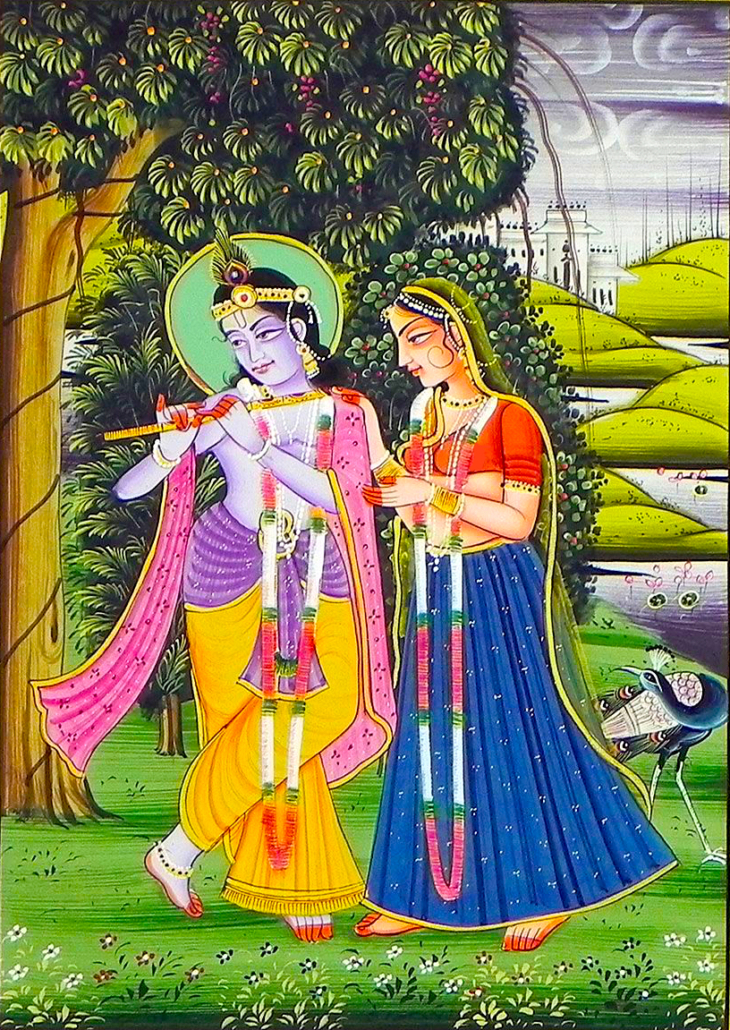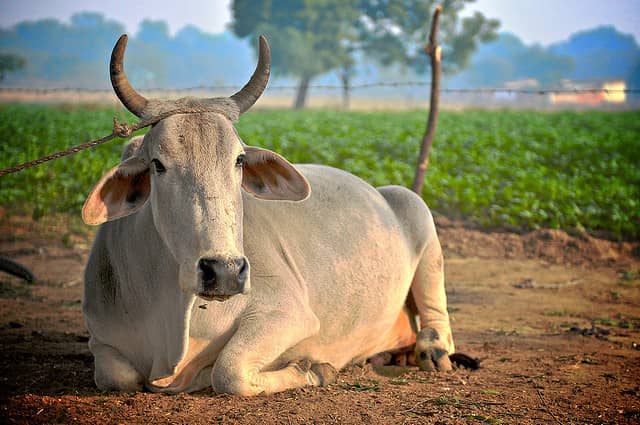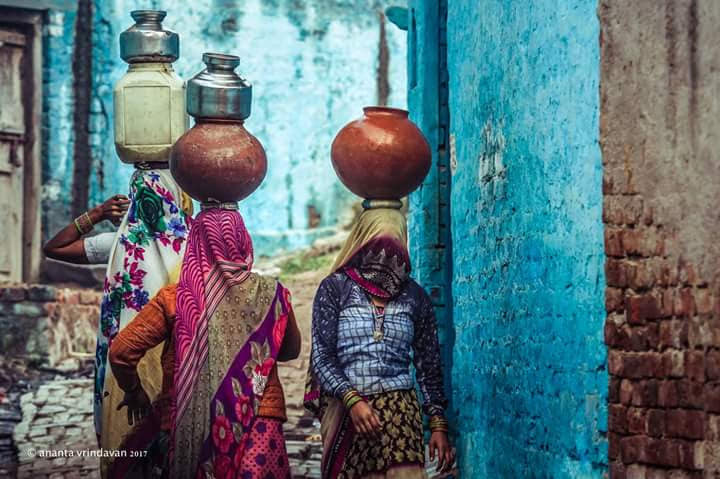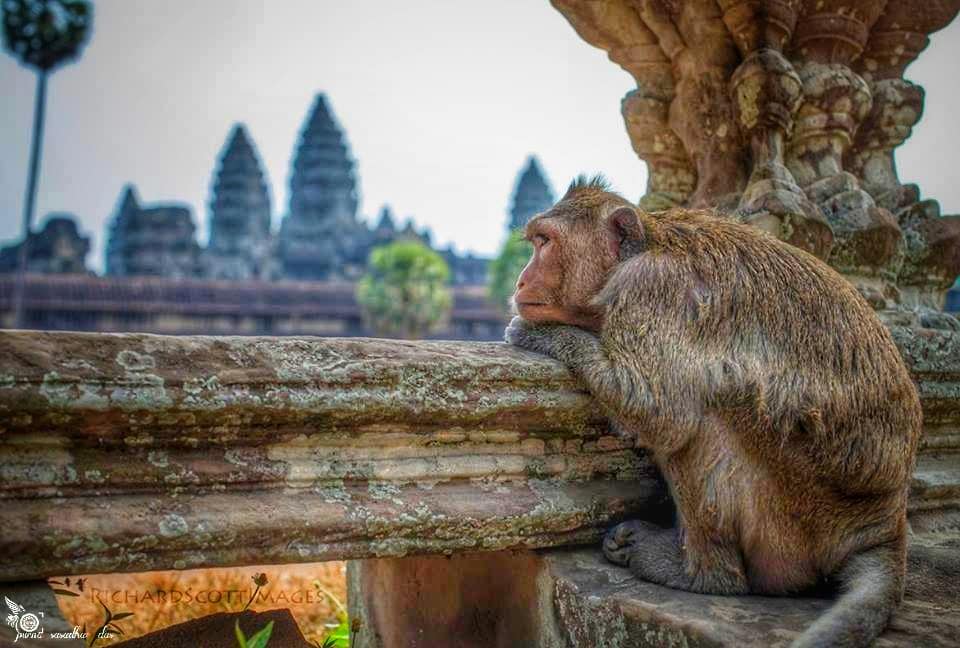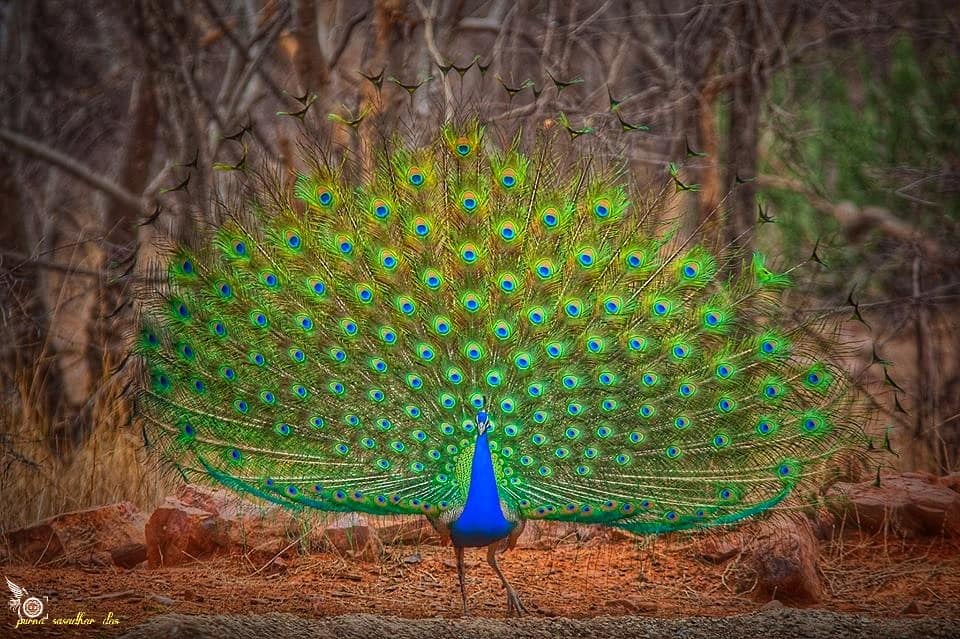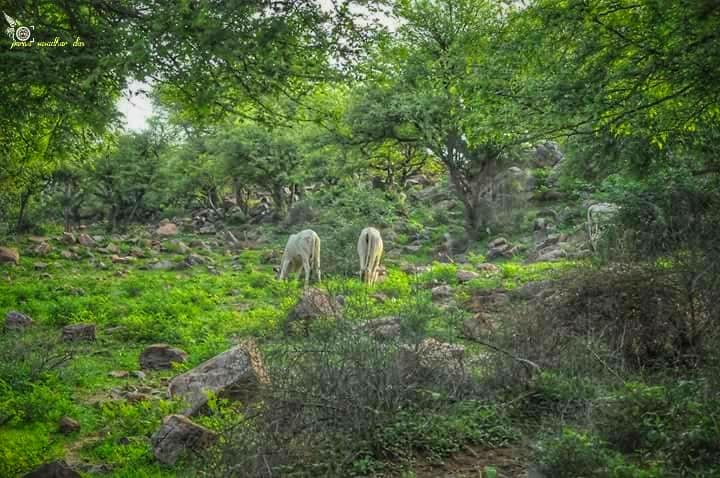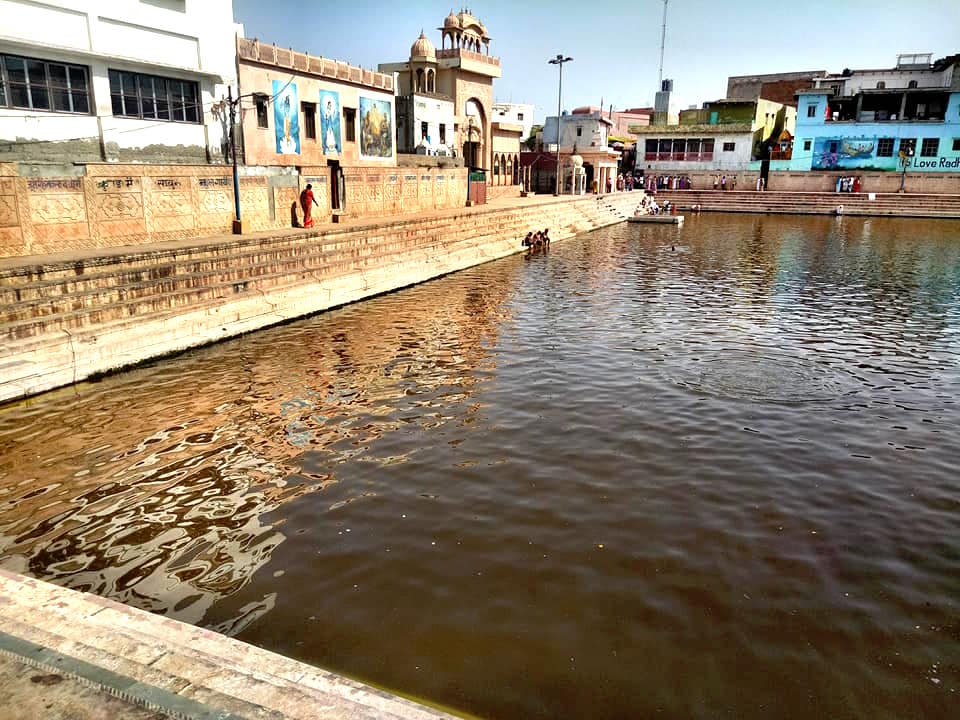Mahanidhi Madan Gopal Das
Ten Amazing Seasons of Vraja (continued from part two)
3. Hemanta Season (early winter)
The sweet fragrance of various flowers characterizes the early winter season. Everyone enjoys the brief morning hours touched by the weakened rays of the sun. The female deer, thinking it is the rays of the rising sun, become joyful for a short time upon seeing the ruby studded earth. The deer, thinking them to be the cool rays of the moon, avoid the areas filled with bright crystal gems.
What more can be said? Frightened by the cold season, Surya Bhagavan, the sun god, retreats to the Southeast corner and the lotuses disappear. Frost competes with the heat of the sun for sovereignty over the earth.
Pearl ornaments, being cold by nature, do not adorn the gorgeous gopis at this time. But they do decorate their hair with kurubaka flowers, and rub pollen from lodhra flowers into it. Maha-saha flower garlands hang across their budding breasts. Saffron ointments, which heat the body, serve as cosmetics. Heavy clouds of incense fill the pastime cottages and heating spices enhance the tambula. Throughout the Hemanta season the gopis refrain from mentioning any object reminding them of cold.
4. Dewy Season
The brightness of the dewy days increases at every moment to decorate the season. The welcome rays of the sun increase the joy of all by chasing away the chill. Leaving its southern course, the Sun proceeds northward. Surya-deva’s gentle touch gradually dissolves the dew and the mist.
Dense foliage overhead prevents accumulation of dew beneath the tall luxuriant trees. In the evening handsome bucks sit beneath these trees and ruminate without the fear of cold. The setting sun appears like a glowing hot iron ball sinking into the water and giving off steam. Birds cry out as they flee from the darkness. Without talking to their mates, they sleep comfortably amidst the lush growth of the beautiful trees. Due to the cold, the cakora birds cease flying in the rays of the moon.
Lovers ponder sleeping blissfully in deep embraces. The long nights favor extended conversations as the rush to sleep recedes. The gopis give up cosmetics like kunkuma that obstruct a lover’s closeness. Lotuses cannot bloom in this season. In the morning the women of Vrindavana, who are endowed with good qualities, warm up their backs by exposing them to the sun.
5. The Spring Season
Mango trees laden with new buds announce the arrival of spring. Asoka trees exploding with splendid red flowers drive away all lamentation, like the Lord’s devotees who have transcended the misty coverings of hankering and lamenting. Cuckoos play about the trees, like the restless monkeys in Ramacandra’s phalanx. Lingering in the air is the fine scent of clove trees fleeting like the happiness derived from material pleasures. The large numbers of bakula trees appear like the strong men serving in the dynasty of Iksvaku. Creepers of blooming mallika flowers beautify the landscape, just as the seven notes embellish the musical scale. Flowering karira trees fill the air with an intoxicating aroma, like the liquid flowing from the heads of love crazed elephants. Flower scented breezes accent the spring season.
Moon rays increase their brilliance with the departure of the cold. While the springtime moon glistens sweetly in the clear skies above, the young gopis enjoy sweet pastimes in the groves below. When the soft breezes caress the sweet fragrances within the groves, the gopis come to gather flowers. Attracted by the beauty of the unlimited flowers on the trees, playful Krishna, wearing a golden necklace, attains the height of bliss from seeing the gopis in their prime of youth.
Dense swarms of humming bees, eager to taste the pollen of lotuses, darken the sky as they speed toward the flowers. But seeing the bees bypass them, the lotus flowers argue among themselves, “Why not drink from me first? Have I committed any offense to you?” Though the flowers offer their pollen to the bees, the bees do not accept. Instead they become intoxicated by smelling the fragrance from the lotus mouths of the Vraja gopis, whose hearts overflow with intense feelings of love.
That best of the maddened elephants roams about with the intoxicated gopis of Vraja whose sweet whispering defeats the soothing sound of running water. The cuckoos resound like a bell to announce their arrival. Various types of tiny creepers appear at this time of year, which smile with their glittering flowers, cry tears of love in the form of dripping honey nectar, and horripilate with new buds.
6. The Summer Season
The sun shines brightly at this time. The summer seasons brings scorching hot winds that make one feel he is breathing poison filled air. The length of nights gradually decreases in the presence of summer.
Due to the intense suffering experienced during the day, any mention of the word “daytime” instills fear in the heart. Mercy manifests in the cool water flowing in the jeweled basins below the shady trees. As a host carefully tends to his guests, the summer offers these cooling basins to attentively serve the birds and beasts. In the same way that pious gentlemen provide for the needy, the shady trees relieve everyone from the heat of summer.
To gain relief from the intense heat, the creepers and trees fan each other by slowly moving their twigs and branches. Krishna bhaktas find joy by absorbing themselves in His humble service, just as one finds happiness by taking a cool bath in summer.
Just as Vaisnavas feel relieved from material distress when they attain lotus feet of Krishna, similarly, the cooling rays of the moon give great relief from the scorching heat of day. In this season everyone very much appreciates the cool nights.
Krishna and the gopis, their ankle-bells chiming sweetly, hold hands as they meander along the cool forest paths under the shady trees. Besides beautifying the night, the summer moon brings full satisfaction to all. In this way the summer is glorified.
Amidst the lotus flowers in the lake [Pavana Sarovara, Manasi Ganga?], there is a beautiful houseboat covered with a canopy trimmed with hanging pearls that wave in the wind. It is sprayed by a mist scented with fine particles of camphor, and buffeted by the pleasant winds of camaras waved by loving attendants. Within that charming houseboat, Radhika-Shyama rest in bliss after the blazing days of summer.
The summer finds Sri Hari wearing a strand of large pearls bordering His hairline and forehead. Krishna’s shimmering golden dhoti blows in the wind. Garlands of mallika buds, cooling flower ornaments, and sandalwood paste adorn His attractive transcendental form. As embodiments of the summer season, the gopis are decorated with ear ornaments of sirisa flowers, crowns of patala flowers, garlands of mallika flowers, and bracelets of kutaja flowers. At the end of the day the gopis and the flower-filled forest of Vrindavana serve the lotus feet of Krishna.
Thus concludes the description of the blissful sweet transcendental seasons of SridhamaVrindavana. Next we will describe Yamunaji and Giriraja Baba.
Kaviraja Sri Karnapura Goswami’s Ananda Vrindavana Campu ki jai!
Radha-Govinda Vraja Lilas ki jai! DasaRtuVana Vrindavana ki jai!
Jai Jai Sri Radhe!
All parts of Krishna Nectar Lilas can be found here.

